Hair care: Introduction (ages 8-10)
Good Skin Knowledge lesson plan
Time: 45 min
Objective
Students will be able to:
Understand the specific functions and purposes of hair and nails
Identify and understand the word “follicle”
Materials
Crayons (make sure you have multiple grey, yellow, black, and brown crayons)
Assessment
Assessment
During Guided Practice, assess whether students are able to answer review questions.
During Independent Practice, walk around and assess students’ work to see if they are able to correctly draw the images according to the description and whether additional assistance is needed to grasp the material.
Opening
3 minutes
Explain that today they will be learning about hair.
Say, “Did you know your hair is dead?” Students may respond. Let them react for a minute in case they have a comment to make.
Explain: “When your hair grows, it starts at the bottom of something called a follicle. Then it grows up and by the time it is long enough to poke out of your skin, it is dead! That’s why it doesn’t hurt to cut your hair!”
Introduction to new material
10 minutes
Materials: Hairy Facts handout
Hand out Hairy Facts handout to students.
Ask for volunteers to read each fact or s/he can assign a reader and have them go around the room reading.
Use examples for the different facts for the “Hair Section”:
Hair on your head keeps you warm in the winter.
Eyelashes keep dust out of your eyes when it’s windy out, or you are at the beach.
Eyebrows help keep sweat out of your eyes when you are exercising, or water out of your eyes when it is raining.
Hair grows from a root in the bottom of a follicle, which is like a flowerpot, from cells and protein, which are like the seed.
Explain we all have different kinds of hair, but it is science that causes this. It is out of our control and not a bad thing at all!
When describing melanin (or pigment), use marker/colored pencil as an example. When you draw one stroke, the color is light, but when you keep coloring in the same place over and over, the color gets darker. Well, melanin is just like the pencil/marker strokes and our hair is like the paper. The more pencil strokes (or the more melanin), the darker the color (or the darker the hair color).
Guided practice
5-7 minutes
Explain that we just learned about hair. If we have a round follicle: what kind of hair do we have: curly or straight? Ask the same question regarding oval follicles. Students should respond, “Straight” and “Curly” respectively. If students respond incorrectly, go over round and oval follicles again.
Ask, “What gives hair its color?” Students should respond, “Pigment” or “Melanin”. If students do not know or answer incorrectly, repeat the fact again.
Ask about yourself, “Do I have round or oval follicles?” Answers vary depending on hair color/type. Reinforce material by saying, “Right! I have (round) follicles because I have (straight) hair!” and “Correct! I have (a lot of) melanin because I have (dark) hair!”
Independent practice
10-15 minutes
Materials: Hair: What Do I Look Like? worksheet
Explain they are now going to do an activity.
Hand out Hair: What Do I Look Like? worksheet.
Explain the directions:
On your paper there are four different descriptions. You need to draw the person according to the description.
If it says the person has oval follicles, you draw curly hair. If it says round follicles, you draw straight hair.
You will also see the word melanin and a number next to it. Remember we said the more melanin hair has, the darker it is? Well, you have a scale on your sheet from one to ten. These numbers represent the amount of melanin, so the lower the number, the less melanin. So someone with melanin 1 might have white hair. Someone with melanin 3 might have blonde hair, and someone with melanin 10 might have black hair. That’s how you know what color to make the person’s hair!
Explain, “The last picture you draw is of yourself! Next to the place that says “follicle,” you circle “round” or “oval” depending on if you have straight or curly hair. And then next to the word “melanin,” you circle the number depending on how dark or light you think your hair is. Then you can draw a picture of yourself.”
Explain she will be passing out crayons (either to share or for each student to use depending on supplies available) and the students will be able to draw and color.
During activity, walk around to see if students understand the material and check for questions or additional assistance.
Closing
2-3 minutes (varies)
While students finish drawing, ask out loud, “So what is a follicle?” “What does melanin do?” “If I have curly hair, what kind of follicle do I have?” etc.
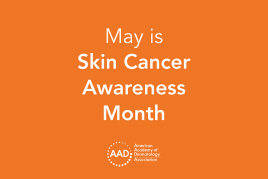 Think sun protection during Skin Cancer Awareness Month
Think sun protection during Skin Cancer Awareness Month
 How to care for your skin if you have lupus
How to care for your skin if you have lupus
 Practice Safe Sun
Practice Safe Sun
 Sunscreen FAQs
Sunscreen FAQs
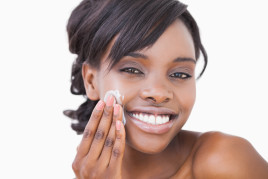 Fade dark spots
Fade dark spots
 Hidradenitis suppurativa
Hidradenitis suppurativa
 Laser hair removal
Laser hair removal
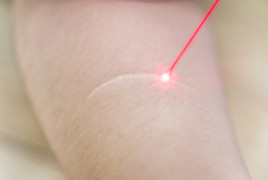 Scar treatment
Scar treatment
 Botox
Botox
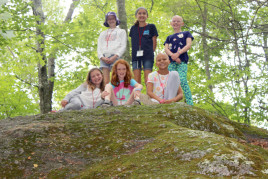 Kids' camp - Camp Discovery
Kids' camp - Camp Discovery
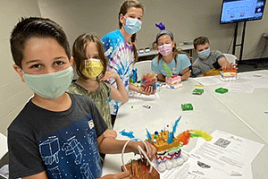 Dermatologist-approved lesson plans, activities you can use
Dermatologist-approved lesson plans, activities you can use
 Find a Dermatologist
Find a Dermatologist
 Why choose a board-certified dermatologist?
Why choose a board-certified dermatologist?